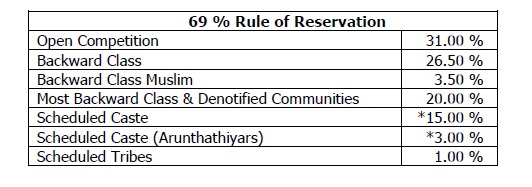7667766266
enquiry@shankarias.in
The Supreme Court has quashed the Tamil Nadu Special Reservation Act of 2021 on the ground that it was not based on updated quantifiable data.

Article 31B of the Constitution states that none of the Acts that are included under the Ninth Schedule shall be deemed to be void by any court or tribunal
References